Seen While Weed-Whacking
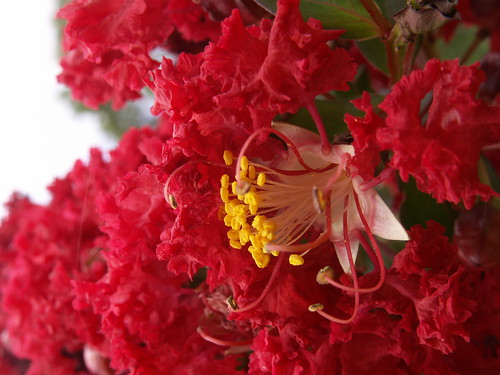
Large view
For Sunday Scribblings #171-Indulgence.
I spent three hours doing yard work on Saturday, with some generous rests built in. When not sitting and quaffing Gatorade in the shade of my garage, I chased down photo ops. Indulging my shutterbug tendencies helped balance out the rest.
Above, our crape myrtle trees are flowering.
"Originally from Asia, crape myrtle has been naturalized throughout the United States as far north as Massachusetts, where it grows as an herbaceous perennial," according to Floridata.com (www.floridata.com/plant1/plantbynumber.cfm?FDID=193). "First introduced to England and the United States in the eighteenth century, crape myrtle is now widely cultivated throughout the world."
The spelling of this plant's common name remains a mystery. Says Floridata, "The common name of this plant is crape myrtle not crepe myrtle. It is called this because the flowers have crinkly petals that resemble the material called crepe (which according to Webster is a 'light crinkled fabric woven of any of various fibers') but many references tell us that you're supposed to spell it crape when it's in front of myrtle."
(Whatever.) Click below for more photos of flora and fauna.

Large view
This lantana sprouted up in our yard, around a volunteer cherry tree killed by lightning a couple of years ago. Bird-assisted landscaping is my guess.
Lantana camara, Family Verbenaceae, also called shrub verbena. "Although common lantana is not native to Florida, it has been naturalized in the state for centuries," says Floridata.com (www.floridata.com/ref/L/lant_c.cfm). "Pets have reportedly become ill after ingesting lantana. The unripe berries are known to be very toxic and the foliage toxic to livestock."
The one that got away: Some day (I tell myself) I'll get in a good shot of a Giant Swallowtail butterfly. One came to visit the lantana patch, but departed before I could retrieve my camera. Here's a distant shot I took of one in 2005.
Our yard was filled with Checkered White butterflies. The one below is nectaring on Florida pusley.

Pontia protodice, Family Pieridae. Ranges throughout the southern United States and Mexico, according to Bugguide.net. The University of Florida states that this species "also colonizes northern states and occasionally parts of southern Canada. It is most common in disturbed areas where its favored host plants occur."
The UF site also shows the difference in wing markings between males and females. This individual is a male.
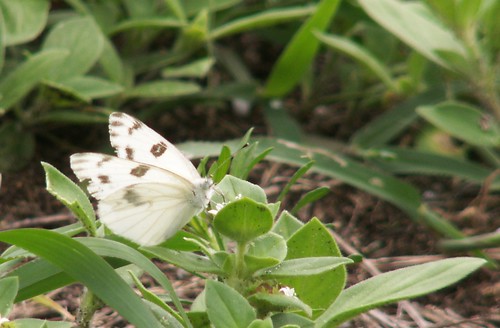
Large view
The individual below is a female.
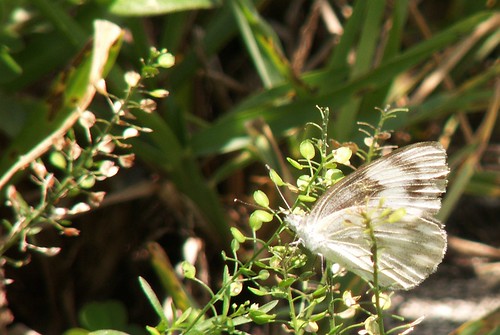
Large view
A Banded Argiope was hanging out in the front yard. This shot shows her orb web.
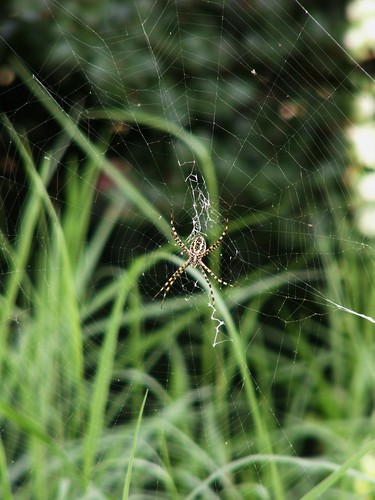
Large view
Argiope trifasciata, also called Banded Garden Spider. This one had a body length of about an inch, which told me it's a female.
This species is widespread in the United States, according to Bugguide.net. Egg sacs (I didn't see any here) may contain more than 100 eggs.
Here's a close-up of the dorsal view.
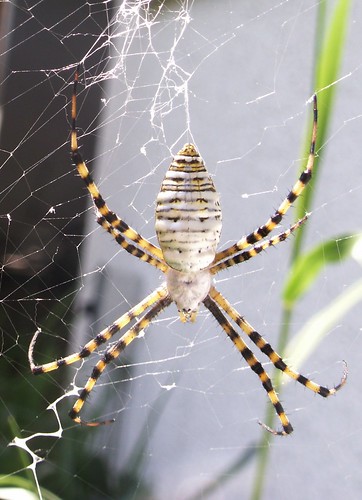
Large view
Close-up of the ventral view. You can see her spinnerets -- the circular area from which she pulls her silk -- near the rear of her abdomen.
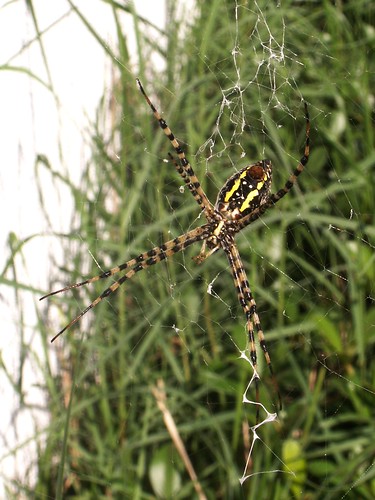
Large view
And a side view.
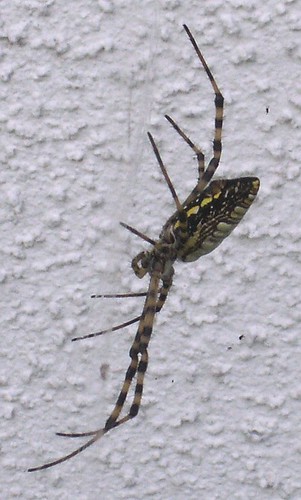
Large view
 |  |
Vol. 2, Deviations: Appetite
Free downloads of both volumes here.
 | Go to Manybooks.net to access Covenant and Appetite in even more formats! |











3 Comments:
very pretty flower but i'm not into spiders at all!
I enjoyed your post even though you never traveled farther then your own back yard, you have educated me about the flora and fauna that surrounds you. I believe that at one time everyone knew the names of the trees and animals around them. Smaller universe then, now we learn more about Mars then what surrounds us. Shame really.
Exquisite photos! You have a lovely place to 'indulge'. Thanks for the information - I'm prone to call each of these exotic flora by the same name - flowers. Maybe I'll learn...
Post a Comment
<< Home